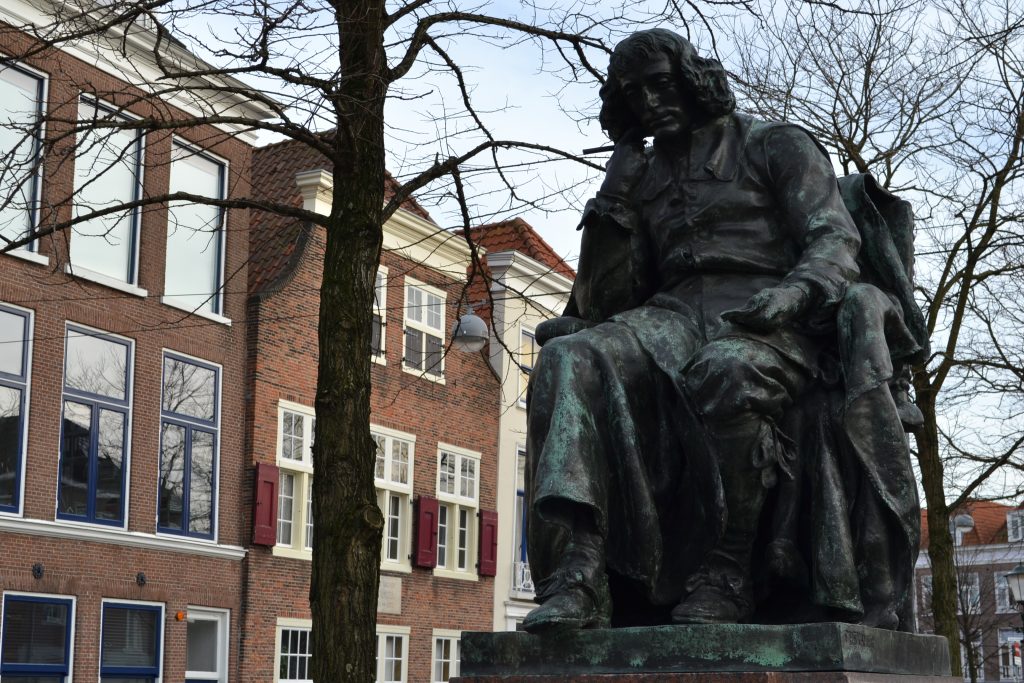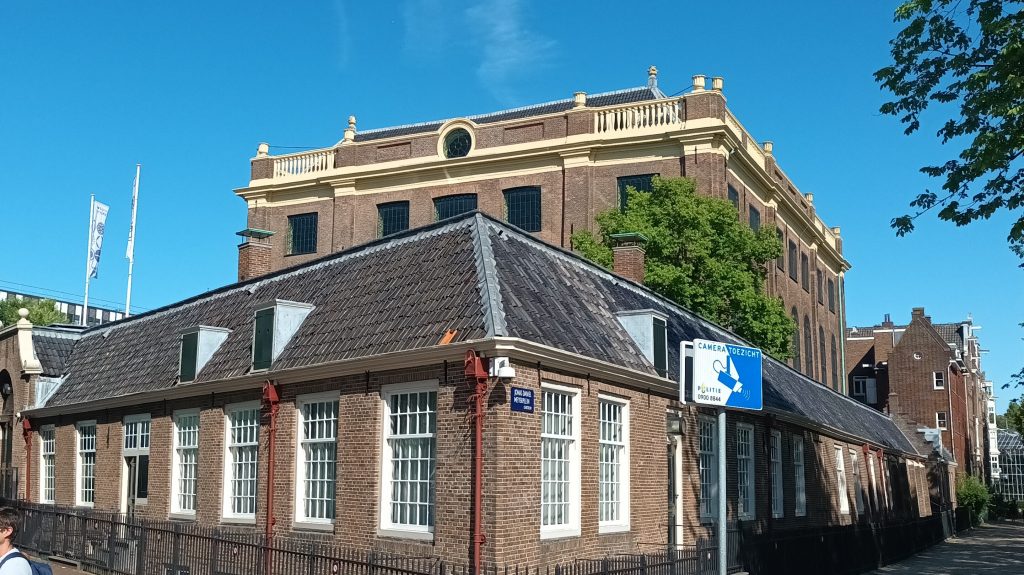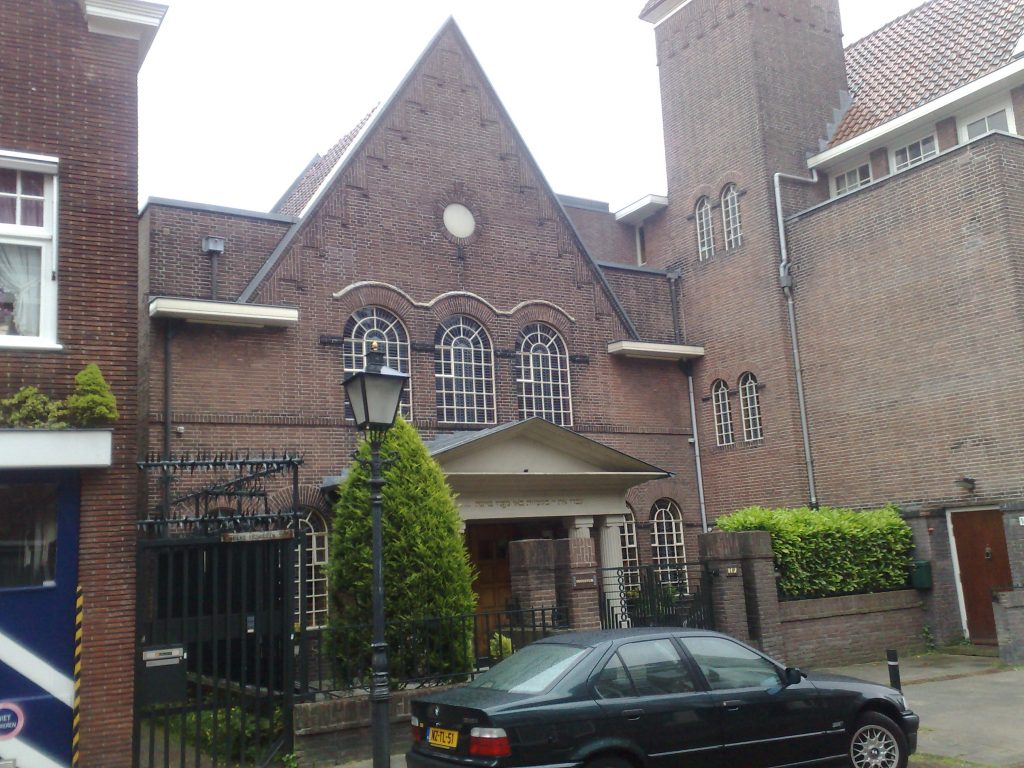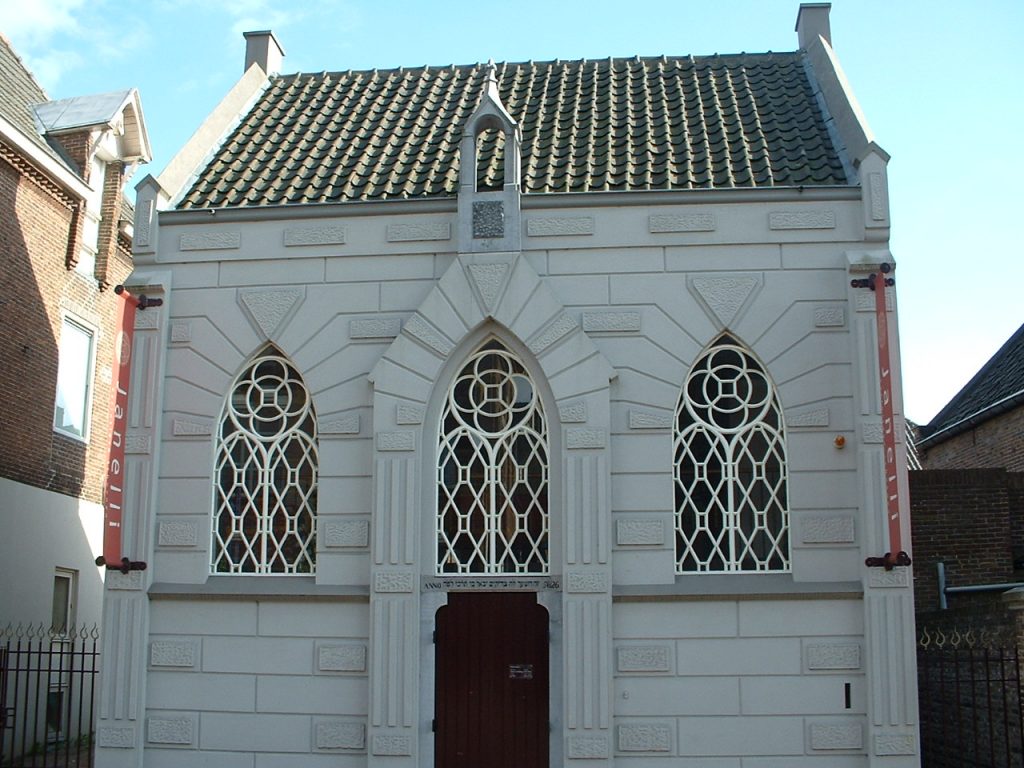Holland has always welcomed political and religious refugees. The first great wave of Jews immigrated to the Netherlands from Spain and Portugal at the end of the sixteenth century.

Although nominally present since the twelfth century, the Jews in Holland were able to openly practice their religion for the first time beginning in this later period. The Sephardic Jews were the first to make a mark on Holland. In the turbulent context of the Dutch struggle for independence from Spain, they preferred to identify themselves as Portuguese rather than Spanish, even when they had immigrated from Castile or Andalusia. The Spaniards were attempting to impose their Catholic faith on the Calvinist Dutch as well as their centralised system of government and unpopular taxes, and so given their common distrust of Hapsburg Spain, the provinces of the Low Countries constituted an unexpected refuge for the Jews.
The first nucleus of a Jewish community arose on the banks of the Amstel River. It would take some fifteen years for this community to be recognised, since the Jews used Dutch names for managing their commercial affairs until 1616. Little by little they openly declared their identity, practiced circumcision, and reconnected to a Jewish tradition that a segment of the community did not even know. Although tolerated in Holland, Jews could not yet hold a civil or military office, nor could they become Christians or proselytise. Guild membership and engaging in retail trade were likewise prohibited, but not a single Jewish ghetto existed.

The first synagogue was constructed in Amsterdam in 1612. In 1619, a law stipulated that each city of the United Provinces was free to determine its own policies regarding the Jews, but that the towns could under no circumstances require Jews to bear any distinguishing sign. In 1657, Holland officially recognised Jews as citizens of the country.
The Dutch authorities asked them not only to declare their religion but also to behave as “good Jews”, in other words, to practice in an orthodox manner. This demand, applied equally to various Protestant sects, went beyond the promise of religious freedom, and left a majority of the exiles perplexed. The Jews of Portuguese descent, having largely modified their rituals and had to summon rabbis from other countries for help. The first among these was a Spanish-speaking rabbi from Thessaloniki.

This situation gave significant power to the leaders of Jewish religious communities, who then issued strict regulations. These leaders (parnassim) were responsible to the Dutch authorities for maintaining order within their groups. To be a member of the Jewish community in good standing, it was necessary to pay a tax and comply with its rules. The community founded its first synagogue, created educational and charitable institutions, and even established a trade tribunal for settling disputes between Jews. Among the first students at one of Amsterdam’s early Talmudic schools was a young boy of five years old who later became the famous philosopher Baruch Spinoza. Because of the magistrates of Amsterdam recognised only religious communities, not belonging to such a group risked serious trouble. A failure to obey Jewish law brought the threat of excommunication (herem), which not only isolated the individual but also threw him into a legal no-man’s-land. Those who were excommunicated were forbidden even to speak to family members. Records show cases of herem, which lasted anywhere from a day to eleven years.
A herem for life
A lifelong herem was pronounced only on two occasions, notably on 1656 against Baruch Spinoza. This descendant of Portuguese converts was banned from the community for having doubted the value of biblical writings. His views knit together notions of the immortality of the soul, the supernatural, the existence of miracles, and the possibility of a God outside philosophy. According to this disciple of Descartes, religion was entirely invented by mankind in order to impose a moral order upon society and to obtain obedience.
Beginning in 1635 Jews from eastern Europe began settling in Holland, first from Germany and then, after 1648, from Poland and Lithuania. In general, the immigrants arrived impoverished and were forced to live in slums. By the middle of the seventeenth century, however, 20% of the stockbrokers registered with the Amsterdam Stock Exchange were Jewish. They had recognized expertise owing largely to their knowledge of languages and connections developed during their Diaspora experiences. These same qualities permitted Jews to act as intermediaries in diplomatic affairs. Jews held visible positions in the silk industry, sugar refineries, and diamond cutting, as well as becoming printers, librarians (primarily of religious books), and doctors. They also pursued careers in banking and commerce. Some of these became successful in commerce with the Antilles and Dutch East Indies to the point of owning a quarter of the shares in the Dutch East India Company. by the mid-eighteenth century, Amsterdam possessed the largest Jewish community in Europe.
Ashkenazim versus Sephardim
As new arrivals, the ashkenazim were initially shunned by Sephardic society to the point that it was even forbidden to give them alms at the entrance of the synagogue. Intermarriage between the two communities was not permitted, nor was the burial of Ashkenazim in the Ouderkerk (Old Church) cemetery (located in the suburbs of Amsterdam). Unable to find better employment, the Ashkenazim were relegated to domestic labor for the Sephardim. At the time, the word tudesca (literally “German woman”) was synonymous with “household servant”. Later the wealthier Polish-Lithuanians would adopt the sae elitist attitude and attempt to get rid of the poor among them… In 1674, the Ashkenazim joined the Sephardim community in large numbers for the first time. Of a total population of 180,000 Jewish inhabitants in Amsterdam, the Sephardic community numbered around 2,500 members. The Ashkenazim had become the clear majority, with the Sephardim representing only 10% of Amsterdam’s Jewish population (down to 6% at the beginning of the twentieth century).
With the French Revolution and the creation of the Batavian Republic in 1796, the National Assembly granted civil rights to the 23,400 Jews in Holland. The Netherlands was the first country to accept Jews in Parliament and to grant them access to government posts. Napoleon Bonaparte’s occupation of Holland led to the promulgation of an agreement regulating relations between “German” and “Portuguese” Jews, and to the establishment of a mutual organisation under the direction of a Jewish assembly.

King William I (1815-40) likewise advanced the welfare and education of the Jewish community. In 1857, Jews were permitted to attend public schools and obliged to reserve religious education for Sundays and evenings. Jewish schools were reopened in Amsterdam only in the twentieth century.

The first half of the twentieth century was marked by an increasing number of mixed marriages and thus a decline in the traditional structure of the Jewish community. The new captains of industry, such as Samuel Van den Bergh, whose margarine factory gave birth to the giant Unilever, or those who headed the large department stores chains were perfectly integrated into non-Jewish society. Jewish newspapers (four weeklies and numerous monthly newspapers and magazines) are still in existence from before the outbreak of the Second World War, but from that period on have been published in Dutch.

In May 1940 German troops occupied the Netherlands. The Jews of Holland suffered greatly under Nazi domination: Of a total population of 140,000, 104,000 were killed. A Dutch minority actively opposed to the Nazis helped 22,000 Jews into hiding. Sadly 8,000 of those Jews were caught. After the war, between 20,000 and 30,000 Jews resettled in their Dutch homeland.

At the dawn of the new millennium, Jews numbered around 27,000 of a total population in the Netherlands of 15.5 million inhabitants. Of the hundred synagogues that existed before World War II, some thirty remain. Regular services take place in only a few of the surviving synagogues.